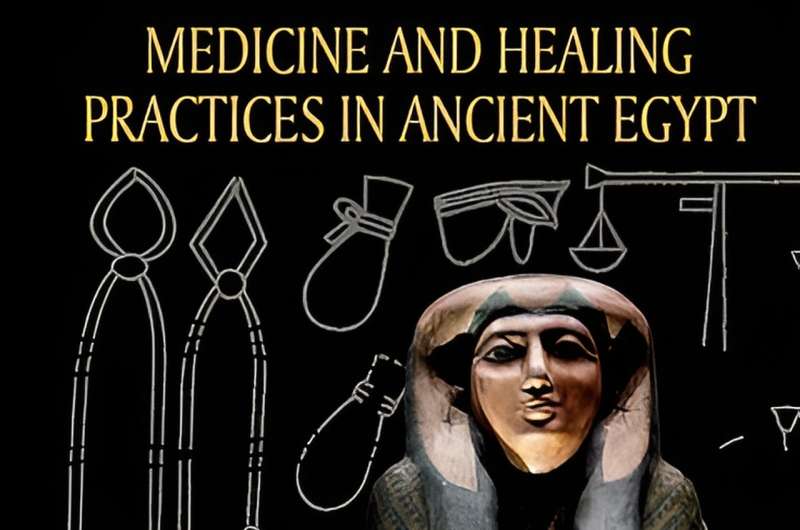This article has been reviewed according to Science X's editorial process and policies. Editors have highlighted the following attributes while ensuring the content's credibility:
fact-checked
trusted source
proofread
Researchers extol skills of ancient Egyptian medics

Cleopatra would have been in safe hands if she really had been bitten by a snake, or affected by any number of illnesses, say University of Manchester Egyptologists.
A new book, titled "Medicine and Healing Practices in Ancient Egypt" by Professor Rosalie David and Dr. Roger Forshaw, is one of the first to consider the perspective of doctors who delivered medical and related treatments, and the patients they cared for.
Among the gems the book covers is a description of treatments for snake bites found in the Brooklyn Papyrus—one of the oldest preserved writings about medicine, dated to around 450 BCE.
The book, published by Liverpool University Press, also details how the ancient Egyptians dealt with old age, their attitudes to deformity and disability, court punishments, insecticides and pesticides and treatment of trauma.
Medical care in ancient Egypt was universally available to men, women and children in all levels of society. Different treatments were carried out in various locations including temple areas, worksites and towns.
To offset the danger of being bitten and poisoned by snakes and scorpions, the Egyptians prayed to deities associated with the creatures.
They used magical spells to ward off snake bites and also to cure their effects, but patients also had practical treatments, some of which were painful, though effective.
According to the researchers, onions, a naturally occurring compound called natron, wound incision and bandaging were all used by the ancient medics of Egypt to treat snake and scorpion bites.
Though previous research by University of Manchester Egyptologists dismissed the long-held argument that the ancient Egyptian queen Cleopatra was killed by a snake, bites by scorpions and snakes were common hazard in ancient Egypt.
The Brooklyn Papyrus is a scroll that describes different snakes found at the time and treatments for their bites. The manuscript also contains treatments of scorpion and spider bites.
Measures include the "knife treatment," which was likely to be aimed at incising the wound to relieve tissue fluid as well as limiting absorption of the venom.
Bandaging was sometimes advised and used to retain specific medications rather than as a tourniquet to prevent the spread of venom.
Natron, which can be found in saline lake beds in arid environments, has the capacity to reduce swelling by osmosis and act as an early antiseptic for wounds and cuts.
It was also used to prepare mummies and as a fish and meat preservative, a household insecticide, part of the leather making process, and a bleach for clothing.
Almost 100 prescriptions are listed in the Brooklyn Papyrus, many of them of herbal origin. Onion was the commonest ingredient of the remedies, probably because of its ability to repel snakes. The sulfonic acid in onions, the same chemical that causes tears when onions are chopped, has a deterrent effect on snakes.
Professor David, emeritus professor of biomedical Egyptology said, "Throughout much of its history, ancient Egypt exerted considerable political, military and cultural influence over neighboring lands.
"The Egyptian health care system was advanced and successful, not least for devising innovative ways to treat snake bites and save lives. Its achievements although widely praised in antiquity, are often not fully recognized today.
"This ancient Egyptian medicine was even evident in medieval and later practices in Europe, and some aspects still survive today in modern 'Western' medicine."
Dr. Forshaw, an honorary lecturer at The University of Manchester, said, "Healers and care providers were essential to the Egyptian medical system, and offered a wide range of treatment methods.
"Certain types of health care, training and practice developed simultaneously in various locations including temples, palaces, towns and villages, battlefields and building sites.
"Surgery, pharmaceutical therapy and magico-religious treatments were available which made use of bandages and splints, medical instruments, prostheses and pharmaceutical prescriptions."
More information: Medicine and Healing Practices in Ancient Egypt. global.oup.com/academic/produc … 44292?cc=us&lang=en&
Provided by University of Manchester




















